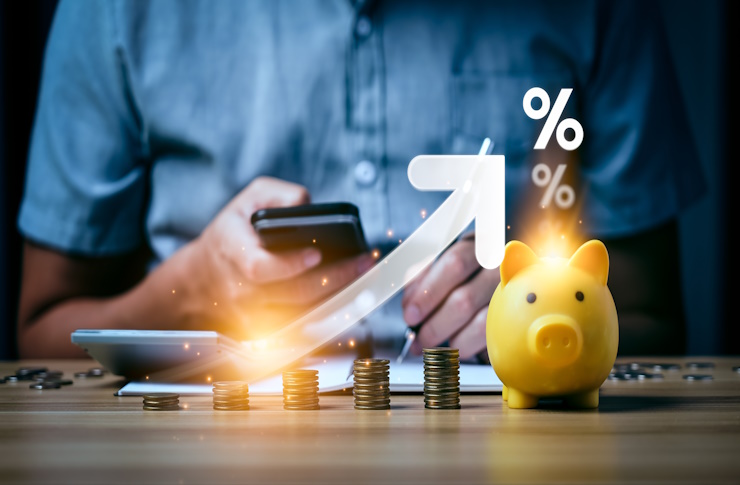The Hidden Costs of Lifestyle Inflation: Safeguarding Your Financial Future
In an era of rapid technological advancements and evolving social norms, the concept of lifestyle inflation has taken on new dimensions, silently eroding the financial foundations of many individuals. This phenomenon, often overlooked in traditional financial planning, can have far-reaching consequences on long-term wealth accumulation and retirement readiness.

The Subtle Creep of Lifestyle Inflation
Lifestyle inflation, also known as lifestyle creep, refers to the tendency to increase spending as income grows. While it’s natural to want to improve one’s quality of life, unchecked inflation can lead to a cycle of living paycheck to paycheck, regardless of income level.
In today’s digital age, lifestyle inflation has taken on new forms. Subscription-based services, from music and video streaming to meal kits and fitness apps, create recurring expenses that can quickly add up. The ease of online shopping and one-click purchases has made impulse buying more prevalent than ever.
Moreover, social media platforms have amplified the pressure to keep up with peers, fueling a desire for experiences and possessions that may be beyond one’s financial means. This digital-age keeping up with the Joneses can lead to financial stress and reduced savings rates, even as incomes rise.
The Psychology Behind Increased Spending
Understanding the psychological factors driving lifestyle inflation is crucial for combating it. Hedonic adaptation, a psychological phenomenon where people quickly return to a baseline level of happiness despite positive or negative life changes, plays a significant role.
As we become accustomed to new luxuries or conveniences, they cease to provide the same level of satisfaction, prompting us to seek the next upgrade or indulgence. This perpetual cycle of desire and fulfillment can lead to a constant upward creep in spending.
Additionally, the concept of relative income hypothesis suggests that people’s satisfaction with their income is determined not by its absolute value, but by how it compares to others’. In an age of curated social media personas, where glimpses into others’ lifestyles are constantly available, this comparison can drive increased spending as individuals strive to match perceived societal norms.
The Long-Term Impact on Financial Goals
While the immediate effects of lifestyle inflation might seem negligible, its cumulative impact on long-term financial goals can be substantial. Every dollar spent on lifestyle upgrades is a dollar not invested in the future.
Consider retirement savings: The power of compound interest means that small increases in current spending can translate to significant reductions in retirement nest eggs. For instance, an additional $100 per month invested over 30 years at a 7% annual return could grow to over $120,000. When viewed through this lens, the true cost of lifestyle inflation becomes apparent.
Furthermore, increased spending often comes with increased fixed costs, such as higher rent or car payments. These commitments reduce financial flexibility and can make it harder to weather economic downturns or career transitions.
Strategies for Mitigating Lifestyle Inflation
Combating lifestyle inflation requires a combination of mindfulness, strategic planning, and disciplined execution. Here are some effective strategies:
• Implement the 50/30/20 budgeting rule: Allocate 50% of income to needs, 30% to wants, and 20% to savings and debt repayment.
• Practice delayed gratification: Institute a 30-day waiting period for non-essential purchases to avoid impulse buying.
• Automate savings: Set up automatic transfers to savings and investment accounts to ensure a portion of income increases goes towards financial goals.
• Regularly review subscriptions: Conduct a quarterly audit of recurring expenses and cancel unused or underutilized services.
• Focus on experiences over possessions: Prioritize spending on meaningful experiences that create lasting memories rather than material goods.
• Embrace minimalism: Adopt a mindset that values quality over quantity and focuses on essentials.
• Use technology wisely: Leverage budgeting apps and financial tracking tools to maintain awareness of spending patterns.
Practical Tips for Sustainable Financial Growth
• Increase savings rate with income: Aim to save 50% of every raise or bonus received.
• Implement the 1% rule: Increase your savings rate by 1% every six months.
• Practice gratitude: Regularly reflect on what you already have to counteract the desire for more.
• Cultivate affordable hobbies: Develop interests that don’t require significant ongoing expenses.
• Learn to cook: Reduce dining out expenses by improving your culinary skills.
• Optimize your living situation: Consider house hacking or downsizing to reduce housing costs.
• Invest in your skills: Allocate resources to education and skill development for long-term earning potential.
Embracing Financial Mindfulness in a Consumer-Driven World
In conclusion, while lifestyle inflation is a pervasive challenge in our modern, consumer-driven society, it is not insurmountable. By cultivating awareness of our spending habits, understanding the psychological factors at play, and implementing strategic financial practices, we can enjoy the fruits of our labor while still securing our financial future.
The key lies in finding a balance between present enjoyment and future security. By making conscious choices about where we allocate our resources and regularly reassessing our priorities, we can build a lifestyle that is both fulfilling and financially sustainable. In doing so, we not only safeguard our own financial well-being but also set a powerful example for future generations in navigating the complexities of personal finance in an ever-evolving economic landscape.





